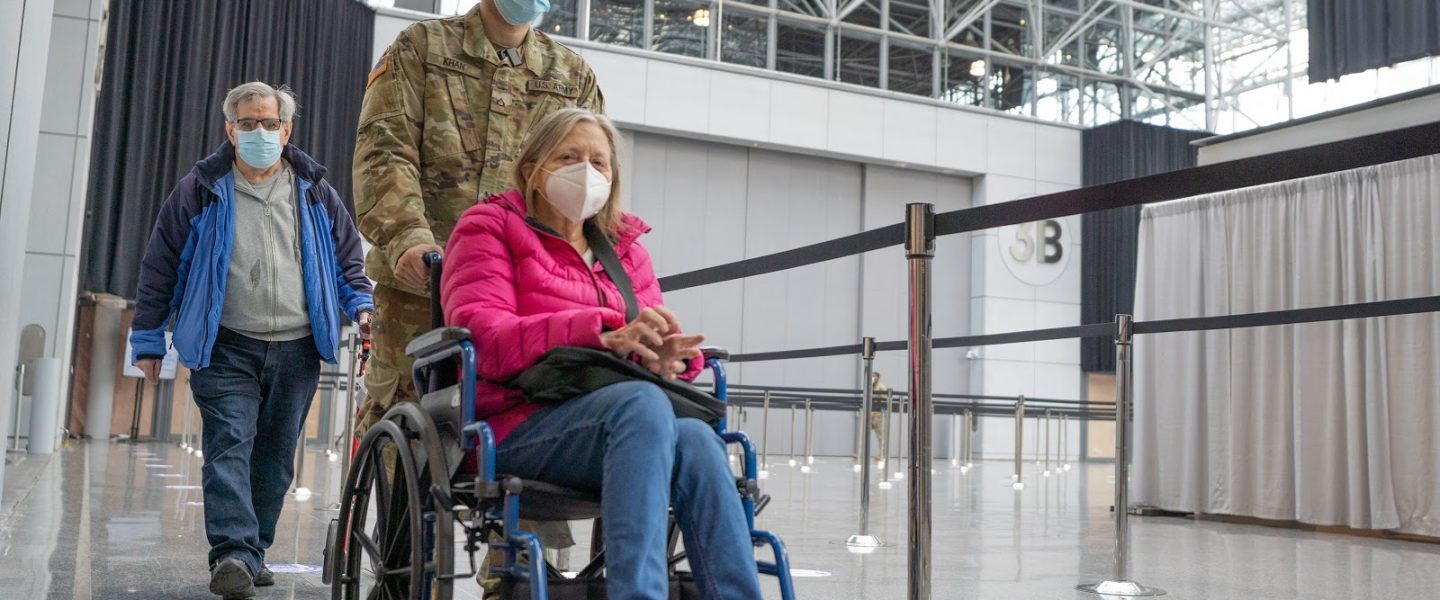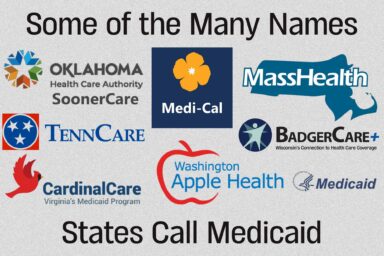Welcome to WhoWhatWhy’s weekly COVID-19 roundup. There’s a lot of virus coverage out there, so this feature will give you a dose of the latest news.
With an average of 2.5 million shots given out per day, vaccine rollout is well under way. All 50 states are planning to open vaccines to everyone age 16 and up by May 1 at the latest. In states such as New York and Texas that have already removed limits, vaccine appointments are a hot commodity. Frustration is high as spots fill quickly. For those registering online, having all the required information at hand is key.
Fighting for an Accessible Vaccine
The expanding availability of vaccines is a relief for many, but vulnerable groups such as people with disabilities are losing out. Questions of access abound as appointment slots can be gone in minutes. Disability communities without priority access are made to compete with millions of others, but online registration systems and websites can be inaccessible for people with disabilities. Even as states have expanded vaccine eligibility, implementation details are also getting in the way; Philadelphia recently made vaccines available to people with intellectual disabilities but didn’t update forms to include this population.
A lack of data on how COVID-19 has impacted people with disabilities exacerbates these issues. Tracking at the federal level is scarce, and states such as North Carolina don’t include disability status in vaccination data collection. Care facilities where people with disabilities live are also not held to the same reporting standards as nursing homes, which means cases of COVID-19 may not be counted. This has led to disability communities and their caregivers being overlooked in vaccine distribution plans.
The increased risk that COVID-19 poses for disability communities is well known. People with disabilities often live in group settings, have underlying health conditions, and are exposed to more family members, workers, and caregivers. Fortunately, there have been steps taken to prioritize people with disabilities, including specialized vaccine clinics in Omaha, NE, and in Rochester, NY.
To Passport or Not to Passport
The issue of access takes a different form as development of a vaccine passport program in the US has sparked debate amid public officials. Republicans have pushed back, seeking to prohibit requirements for proof of vaccination in Florida and Ohio. Various GOP lawmakers have called it “unconstitutional” and “dystopian,” expressing concerns that the initiative would restrict liberties and access to everyday locations. The White House, meanwhile, has said there will be no federal mandate requiring vaccinations and no centralized universal federal vaccinations database. Development of passports will be left to the private sector with the White House overseeing the process.
New York was the first state to launch a digital COVID-19 vaccine passport last week in partnership with IBM. The Excelsior Pass is a voluntary system where users can input their information and then flash a QR code in lieu of showing a negative test or vaccine card. With the pass, the city hopes that businesses in hard-hit industries such as weddings, sports, and entertainment can recover more quickly. Other states may launch similar passes in the coming months, and IBM has said it is in talks with “just about every state.”
Vaccine passport initiatives have also begun internationally. The EU proposed a Digital Green Certificate for its 27 member states in anticipation of tourism season. After a lack of visitors the summer before, EU countries don’t want to miss out on this important source of revenue. Cruise ships and airlines could benefit from vaccine passports, too. In fact, the International Air Transport Association is currently developing its own Travel Pass. Japan and China have also launched vaccine passports this month.
The Trials Never End, Do They?
As schools around the country reopen, the Centers for Disease Control and Prevention has stated that 3 feet of social distancing is safe in schools if everyone is wearing masks and following prevention measures. This change follows the low levels of transmission recorded in these environments.
Vaccine developments are continuing for younger age groups, however, with Pfizer’s announcement of “100 percent efficacy” in 12- to 15-year-olds as well as new trials for children six months to 11 years old. Vaccinating kids may be important to achieving herd immunity and reopening schools.
While the idea has been suggested that naturally acquired immunity is more effective than the vaccines, experts still say that the latter is the more predictable and the safer bet. There are a wide range of responses to COVID-19, and doctors don’t yet understand why certain people get very sick from the virus while others are asymptomatic. Some risk factors such as genetic mutations are not age-related at all. Still, since only a very small percentage of coronavirus-related deaths occur in children, kids remain closer to the end of the vaccine line. Dr. Anthony Fauci has stated that children could be waiting until the beginning of 2022 to get their shots.
Related front page panorama photo credit: Adapted by WhoWhatWhy from Cal OES / Flickr (CC BY-NC 2.0).



